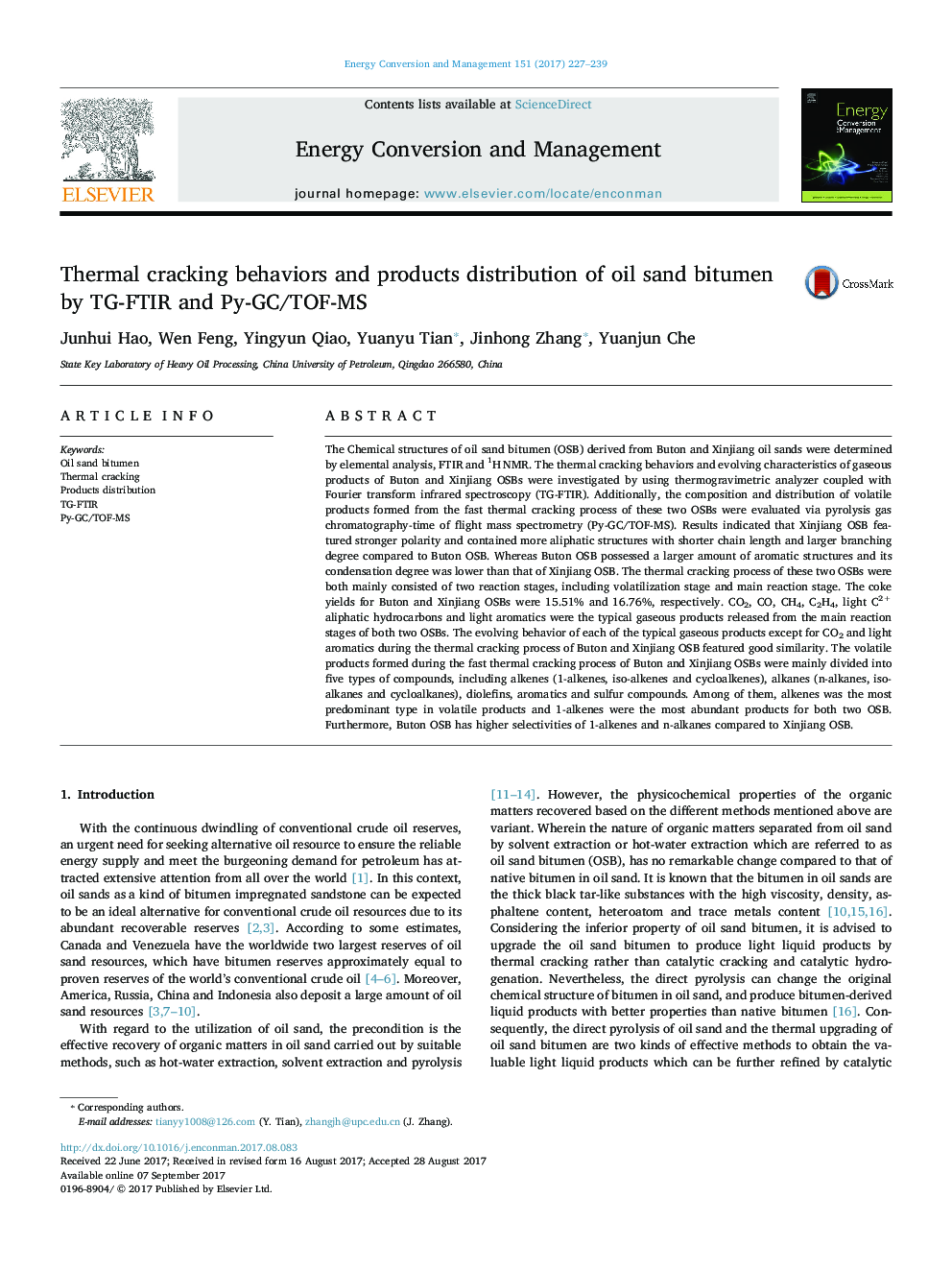| کد مقاله | کد نشریه | سال انتشار | مقاله انگلیسی | نسخه تمام متن |
|---|---|---|---|---|
| 5012345 | 1462811 | 2017 | 13 صفحه PDF | دانلود رایگان |
عنوان انگلیسی مقاله ISI
Thermal cracking behaviors and products distribution of oil sand bitumen by TG-FTIR and Py-GC/TOF-MS
دانلود مقاله + سفارش ترجمه
دانلود مقاله ISI انگلیسی
رایگان برای ایرانیان
کلمات کلیدی
موضوعات مرتبط
مهندسی و علوم پایه
مهندسی انرژی
انرژی (عمومی)
پیش نمایش صفحه اول مقاله

چکیده انگلیسی
The Chemical structures of oil sand bitumen (OSB) derived from Buton and Xinjiang oil sands were determined by elemental analysis, FTIR and 1H NMR. The thermal cracking behaviors and evolving characteristics of gaseous products of Buton and Xinjiang OSBs were investigated by using thermogravimetric analyzer coupled with Fourier transform infrared spectroscopy (TG-FTIR). Additionally, the composition and distribution of volatile products formed from the fast thermal cracking process of these two OSBs were evaluated via pyrolysis gas chromatography-time of flight mass spectrometry (Py-GC/TOF-MS). Results indicated that Xinjiang OSB featured stronger polarity and contained more aliphatic structures with shorter chain length and larger branching degree compared to Buton OSB. Whereas Buton OSB possessed a larger amount of aromatic structures and its condensation degree was lower than that of Xinjiang OSB. The thermal cracking process of these two OSBs were both mainly consisted of two reaction stages, including volatilization stage and main reaction stage. The coke yields for Buton and Xinjiang OSBs were 15.51% and 16.76%, respectively. CO2, CO, CH4, C2H4, light C2+ aliphatic hydrocarbons and light aromatics were the typical gaseous products released from the main reaction stages of both two OSBs. The evolving behavior of each of the typical gaseous products except for CO2 and light aromatics during the thermal cracking process of Buton and Xinjiang OSB featured good similarity. The volatile products formed during the fast thermal cracking process of Buton and Xinjiang OSBs were mainly divided into five types of compounds, including alkenes (1-alkenes, iso-alkenes and cycloalkenes), alkanes (n-alkanes, iso-alkanes and cycloalkanes), diolefins, aromatics and sulfur compounds. Among of them, alkenes was the most predominant type in volatile products and 1-alkenes were the most abundant products for both two OSB. Furthermore, Buton OSB has higher selectivities of 1-alkenes and n-alkanes compared to Xinjiang OSB.
ناشر
Database: Elsevier - ScienceDirect (ساینس دایرکت)
Journal: Energy Conversion and Management - Volume 151, 1 November 2017, Pages 227-239
Journal: Energy Conversion and Management - Volume 151, 1 November 2017, Pages 227-239
نویسندگان
Junhui Hao, Wen Feng, Yingyun Qiao, Yuanyu Tian, Jinhong Zhang, Yuanjun Che,